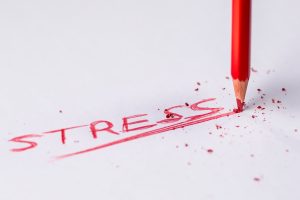Resources for Creating a Successful ToK Exhibition
Research is an important part of creating a successful Theory of Knowledge (ToK) Exhibition. Knowing where to find the information and resources you need can help make your exhibition an insightful success.
One of the most helpful sources of information for creating a ToK Exhibition is library resources. Libraries often hold a variety of books and articles related to the theme you are researching. Additionally, libraries often have access to digital databases with additional resources and materials. Take advantage of the resources available in your local library and online to research your topic and discover helpful reference materials.
The internet is also a great source of information that can help bring your ToK Exhibition to life. Searching online can give you links to websites and blogs to start your research as well as news articles and archives on the topic you are studying. Be sure to only use trustworthy sources of information, such as reputable websites, academics, government bodies, or industry experts.
You can also seek out advice and opinions from authors, experts, or organisations that are knowledgeable in the area you are researching. This can provide insight into the topic and give you a better understanding of how to structure and design your ToK Exhibition. Additionally, you may want to consider attending a relevant conference or event which can provide important knowledge and resources to help shape your research.
In addition to these methods of external research, using your own personal experiences can be invaluable. Reflecting on your own understanding of the topic can help you get a better sense of what your audience will take away from your ToK Exhibition. Consider how you can use your own experiences to relate to the topic and engage your audience.
To summarise, resources and reference materials are essential when creating a ToK Exhibition. Utilising libraries, online searches, expert opinions and advice, and your own personal experiences can help you build a successful exhibition.
Challenges of Creating a ToK Exhibition and How to Overcome Them
Creating a Theory of Knowledge (ToK) exhibition is no easy feat. Here are some common challenges that you could face and how to address them.
Lack of Time/Resources
One primary challenge that many people face when creating a ToK exhibition is the lack of time and resources. It can take months or even years to create an effective ToK exhibition from scratch, and the cost of materials can add up quickly.
To overcome this challenge, it is important to be organized and plan out your project in advance. Set realistic deadlines for yourself, and take the time to find affordable materials that still provide the desired effect. You can also look into potential sponsors or grants that can help with the overall cost of the exhibition.
Unclear Goals
Another challenge that may arise when creating a ToK exhibition is having unclear goals for the project. Many creators tend to get carried away and try to include too many topics, visuals, or ideas into their exhibition. This can distract from the purpose of the project and ultimately produce an ineffective outcome.
To ensure clarity of purpose, focus on a single topic or theme and stick to it throughout the exhibition. Establish specific criteria for measuring success and make sure that you have a clear understanding of what you want the audience to learn or gain from the experience.
Logistical Difficulties
Finally, logistical difficulties can arise during the creation of a ToK exhibition, such as finding the right venue or ensuring access to adequate materials. To combat this issue, it is important to start planning early and be flexible with your options. Consider alternative venues and materials that could be used to produce the desired effect.
Overall, creating a Theory of Knowledge exhibition is a rewarding experience, but like any project, it can come with its own unique set of challenges. By following a detailed plan, staying organized, and maintaining clarity of purpose, you will be well on your way to a successful ToK exhibition.
You Might Also Like:
Highlight Key Tips and Techniques for a Successful ToK Exhibition
When creating a Theory of Knowledge (ToK) Exhibition, it’s important to apply some tips and techniques that will help ensure its success. Through the use of creative methods, an engaging atmosphere, and efficient planning, you can create a memorable experience for your audience.
Here are some key tips and techniques to consider when creating a ToK Exhibition:
- Have a Clear Focus: Make sure your exhibition has a unifying theme or focus so that your audience can easily understand what your message is. This could be something specific related to ToK or more broadly related to any other interdisciplinary topic.
- Make it Interactive: An interactive exhibition can help enhance the experience and make it more engaging for the participants. Try to incorporate elements that will allow people to actively participate in the exhibition. You could have hands-on activities, online games, surveys, or video recordings.
- Create an Engaging Atmosphere: The atmosphere of your exhibition can make or break the experience for your participants. Ensure that the environment is comfortable and conducive to learning. You can have pleasant background music, different seating areas, and even snacks available to create an enjoyable and inviting atmosphere.
- Include Visual Aids: Visual aids can be incredibly effective when explaining complex concepts. Try to incorporate visuals such as infographics, diagrams, and photographs to help emphasize your points and make them easier to understand.
- Plan Ahead: Proper planning is essential for the success of an exhibition. Make sure to start early so that all the arrangements can be made well in advance. Plan out how you want to structure your exhibition, how much time each section will take, and what materials you need.
These tips and techniques can help you create an effective and successful Theory of Knowledge Exhibition. By following these guidelines, you can ensure that your exhibition is memorable and engaging for everyone who participates.
Different Methods for Presenting Content
When it comes to creating a successful Theory of Knowledge Exhibition, the way you present your content is key. You want to ensure that the audience is engaged not just with the subject matter but with the way in which it is presented. To do this, there are many different methods that can be used.
One popular method is to use visuals. Visuals can range from photos and videos to diagrams and charts. They can make complex topics much easier to understand and keep the audience interested. Additionally, visuals provide an opportunity to be creative and show personality, which can make your exhibition much more memorable.
You can also use interactive elements such as quizzes or games. This type of content can be especially effective for engaging younger audiences and can make a typically academic subject much more enjoyable. It also provides an easy way to measure success and can be a great way to get people thinking about the ToK topic.
Similarly, you can use physical models or simulations. These can be very effective for demonstrating scientific concepts or complex processes that may be difficult to understand via visuals alone. By making the information tangible, it can be easier to comprehend.
Finally, you could use text-based content such as written essays or poems. This type of content can be used to effectively communicate an idea or opinion in a concise way. As long as the language is accessible, it can be an effective tool to engage and inform an audience.
Each of these methods offers different advantages and should be carefully considered when designing your Theory of Knowledge Exhibition. Be sure to select an appropriate mix of content that will engage your audience and effectively illustrate your chosen ToK topic.
Connecting with the Audience Throughout the Exhibition
The success of your Theory of Knowledge Exhibition relies heavily on the relationship you build with your audience. You need to make sure that your visitors are left entertained, engaged, and with an overall positive impression of your exhibition.
To achieve this, you should take every opportunity to interact with your audience during their visit. Here are some suggestions for how you can make that happen:
- Set Up a Q&A Session – Once the exhibition has been set up, organize a Q&A session where the audience can ask questions they may have about the different topics showcased in the exhibition.
- Invite Guest Speakers – Invite experts or knowledgeable people to give talks and lectures at different parts of the exhibition. Having professionals discuss specific topics will add credibility to the event, while giving guests an opportunity to learn more.
- Encourage Interaction – Introduce interactive activities and games to your exhibition so that guests are encouraged to participate actively. This could take the form of quiz competitions, demonstrations, or even panel discussions.
- Create a Dialogue – Ask questions and start conversations that your guests can contribute to or comment on. Doing this will help to create a dialogue between you and your audience, which will deepen the impact of your exhibition.
These are just a few suggestions for how you can create a meaningful relationship with your audience throughout your ToK Exhibition. With the right approach, your exhibit can be both informative and enjoyable for everyone who visits.
Conclusion
You have all the tools you need to organize and structure your own Theory Of Knowledge Exhibition. Create a detailed plan of your exhibition, make sure you have a solid framework to hang each part of the exhibition on. Make sure you have all the resources to create effective content and don’t forget to keep track of progress and measure success along the way.
Keep in mind, creating a successful ToK Exhibition requires assembling all the pieces of the puzzle. Utilize the tips and techniques discussed to help guide you through the process, from outlining the framework to presenting content in an engaging and interactive way. You are now equipped to create an amazing and informative ToK exhibition!
We hope this guide encouraged and inspired you to pursue your own Theory Of Knowledge exhibition. You are now ready to apply the steps discussed in this guide and design and develop your own successful ToK Exhibition.








